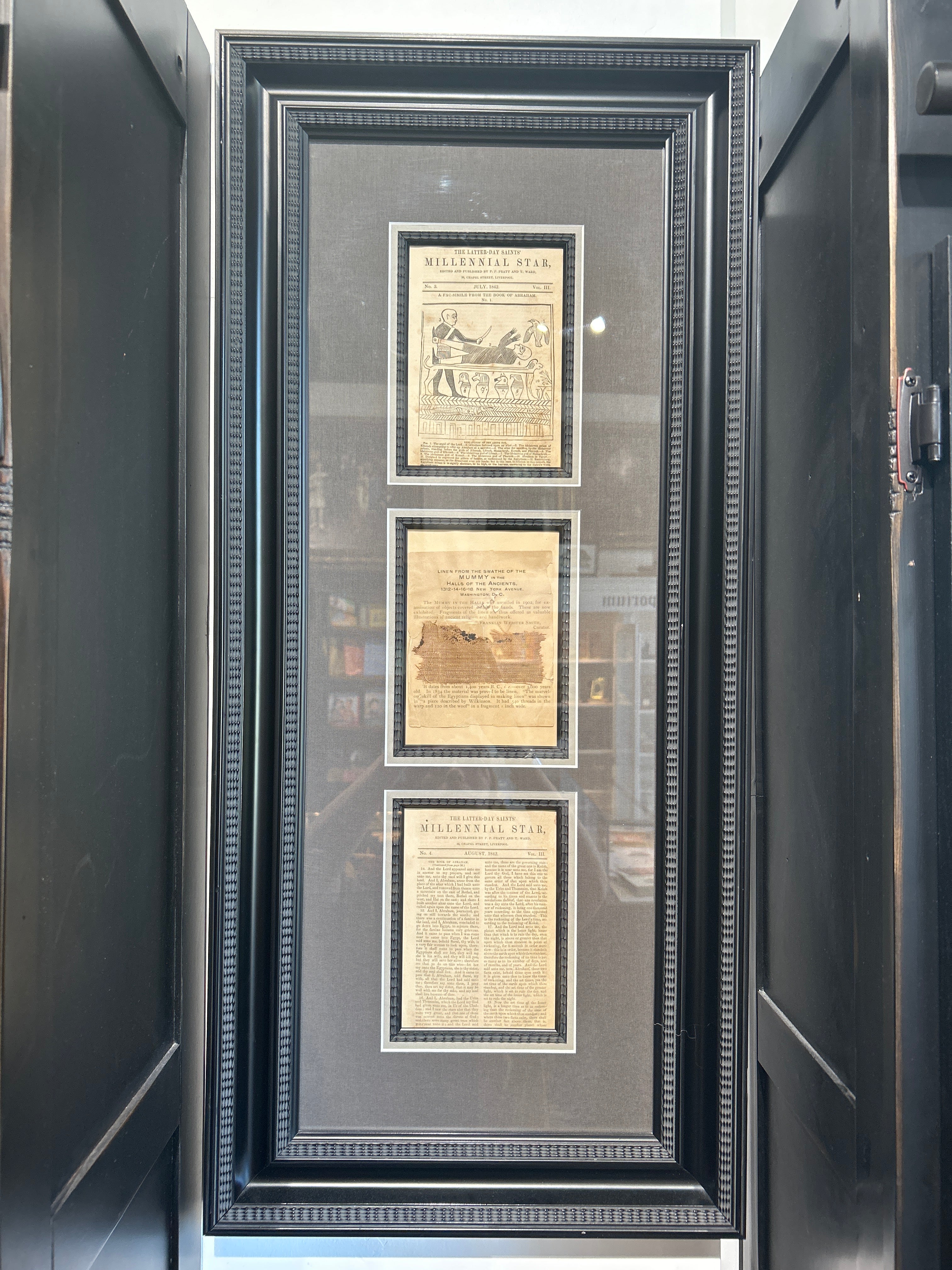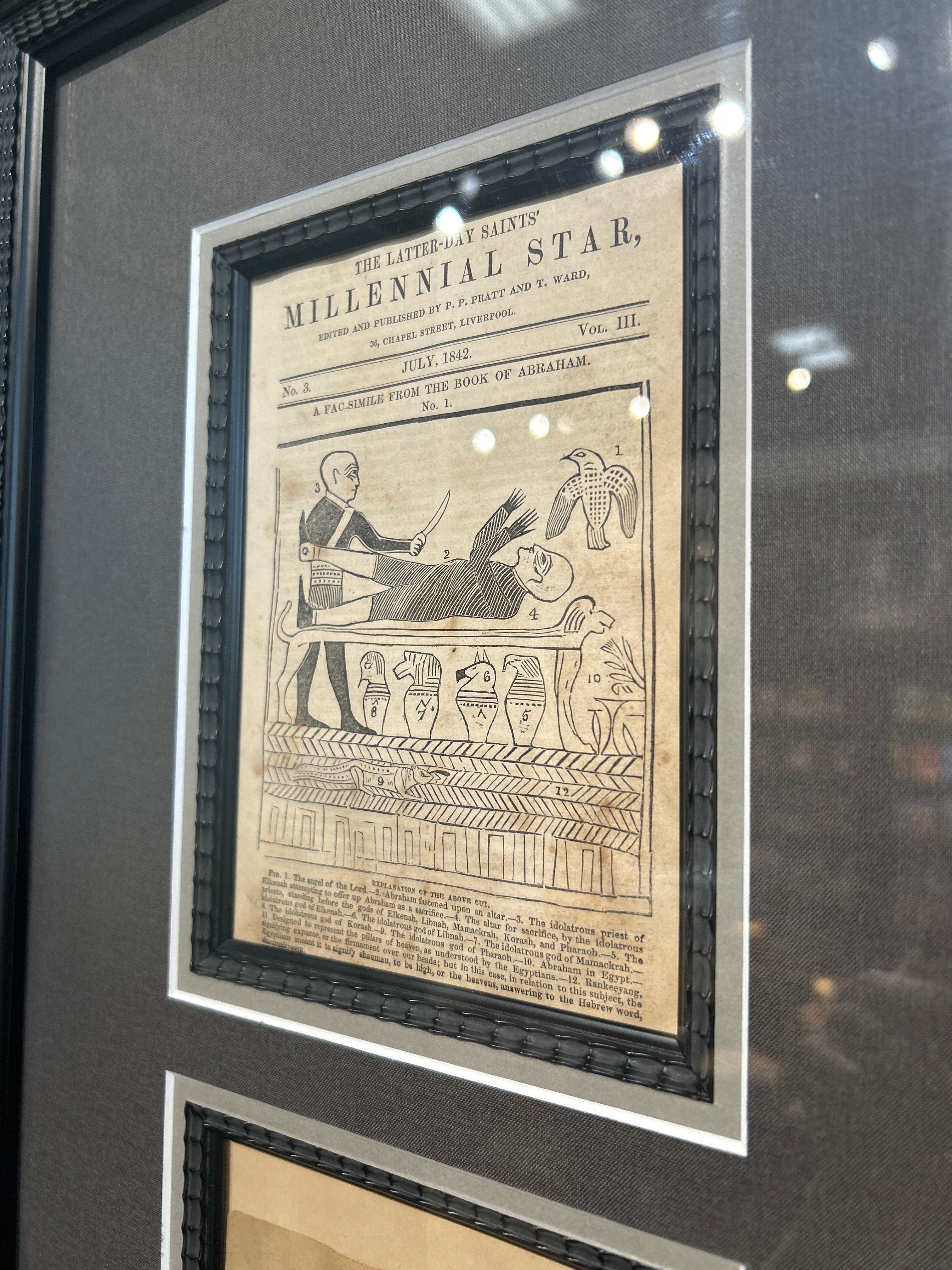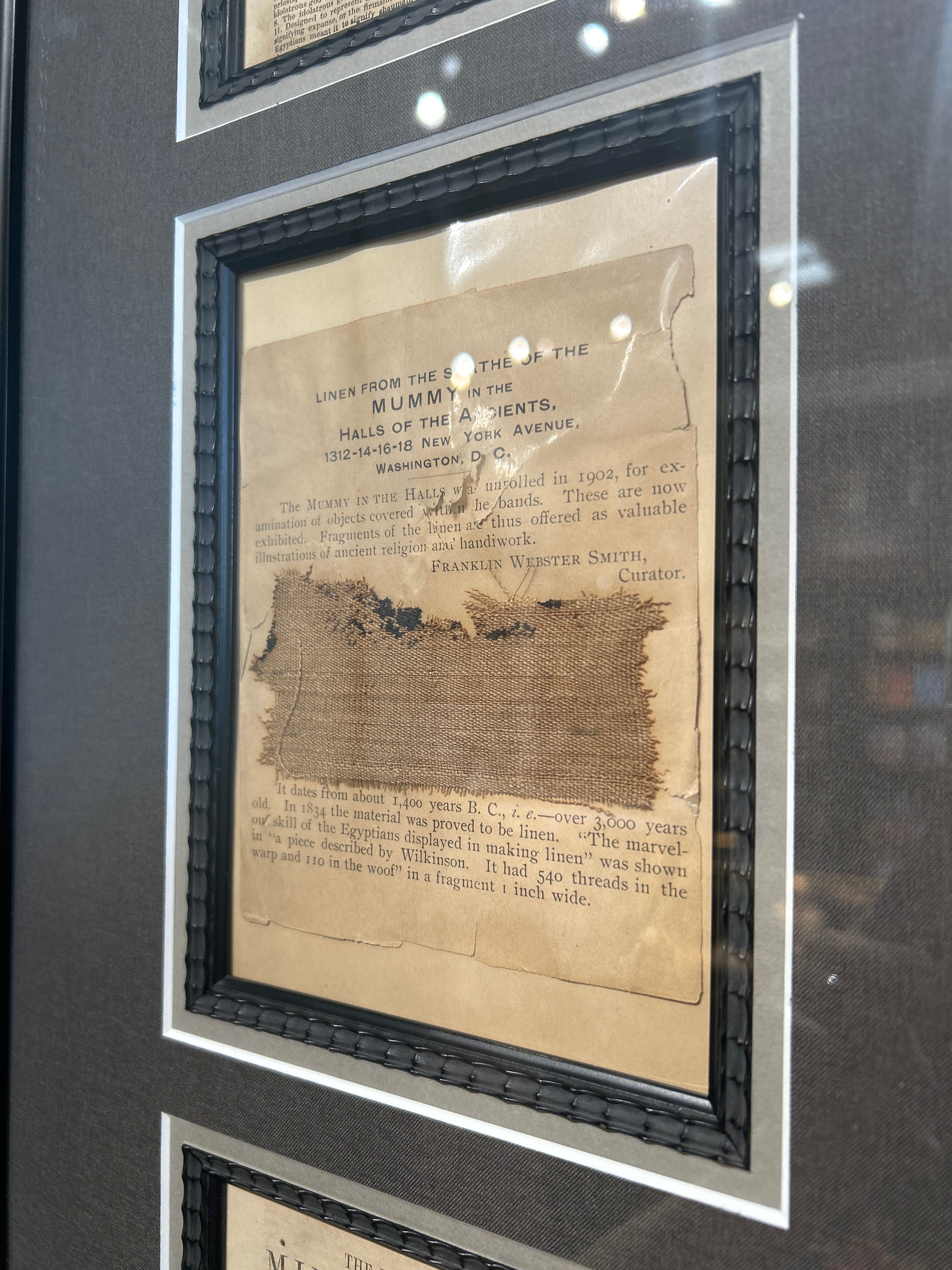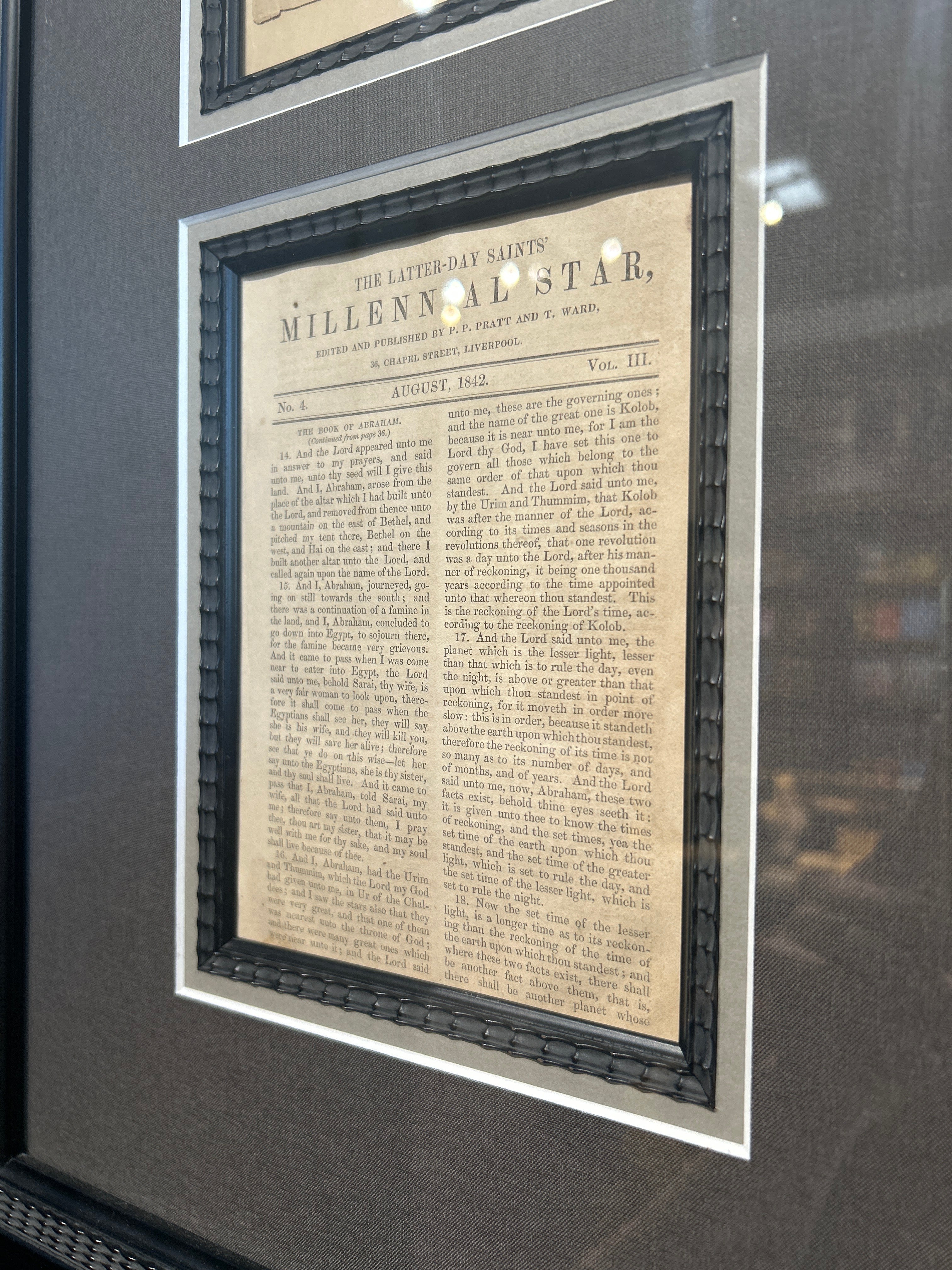Framed Milennial Star with Mummy Cloth
Couldn't load pickup availability
5 F Linen from the Swathe of the Mummy in the Halls of the Ancients Washington D.C. These bands fragments are offered as valuable illustrations of ancient religious handiwork. It dates back from about 1,400 years B.C. over 3,000 years old. In 1834 the material was proved to be linen. The Abraham document is an early printed copy and the Millennial Star is a fragment page dating 1842
Note
In 1902, the Smithsonian, then known as the United States National Museum, received a mummy named Hapi-Men from Abydos, dating back to the Ptolemaic Period (30th Dynasty)
This mummy was donated by British archaeologist Sir William Flinders Petrie. Hapi-Men was buried with his dog, affectionately named Hapi-Puppy. In addition to Hapi-Men, the museum's collections also included "Ginger", a predynastic mummy preserved naturally in dry sand.
While specific details about the 1902 exhibition itself are limited, the Smithsonian's National Museum of Natural History (NMNH) currently features an ongoing exhibition titled "Eternal Life in Ancient Egypt". This exhibition showcases mummies from the Smithsonian's collection, exploring ancient Egyptian burial practices and beliefs about the afterlife. It also addresses the museum's efforts to ethically manage its collection of human remains, acknowledging that some past practices were incompatible with modern standards.







